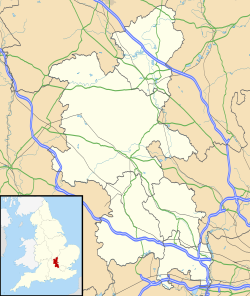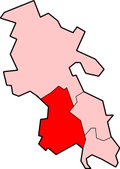History
Settlement at Horsleys Green dates back to at least the seventeenth century, [4] with some of these properties, such as Old Beckings [5] and Horsleys Green Manor, [1] still in use today. It was originally known as Ostlers Green, which suggests there may have been stables connected with the settlement (Ostlers being an archaic word for stablemen). [1] [6] The Captains Pond, which was located at the north of the hamlet, continued to provide refreshment to the horses of travellers staying at the Harrow, a nearby public house. [6] By the 1880s, the name had changed to Horslers Green, and later it became Horsleys Green. [1] [6]
During the Second World War, a camp school for disabled evacuees from London was established in Horsleys Green, [1] [3] [7] run by the government-formed National Camps Corporation. [8] After the war, such camp schools were offered for sale, and ownership of the school at Horsleys Green passed into the hands of Lancashire County Council in 1947. From April of that year the Lancashire Education Committee ran an all-boys boarding school on the site. [7] Initially, this school was known as Stokenchurch School, but the name changed to Horsley's Green School in 1950. [note 1] [8]
In 1971, the grounds were acquired by Wycliffe Bible Translators, as 'Reasonable Equivalent Accommodation' for their previous base in Bletchingley, which was subject to a compulsory purchase order for the construction of the M23. [9] Lancashire County Council had also had offers for the site from a government department, but Wycliffe's bid had been accepted by a majority of one vote. [9] After taking possession on 8 November, Wycliffe expanded the site with additional wooden buildings bought from various sources, including Twickenham Grammar School. [9] A few years later, in May 1975, the kitchen and dining room complex had to be rebuilt following a fire.
Wycliffe Bible Translators used the site as their UK headquarters until September 2013. Known as 'The Wycliffe Centre', the site served as a base for training in cross-cultural language work under the 'European Training Programme', [10] and as a Christian conference centre with facilities for 160 guests. [11] The buildings were named after individuals involved in Bible translation, such as William Carey, Henry Martyn and James O. Fraser. More recent buildings were built on the site since the 1970s: Tyndale and Aylward were built in the 1980s, and Bede followed in 1998.
This page is based on this
Wikipedia article Text is available under the
CC BY-SA 4.0 license; additional terms may apply.
Images, videos and audio are available under their respective licenses.


